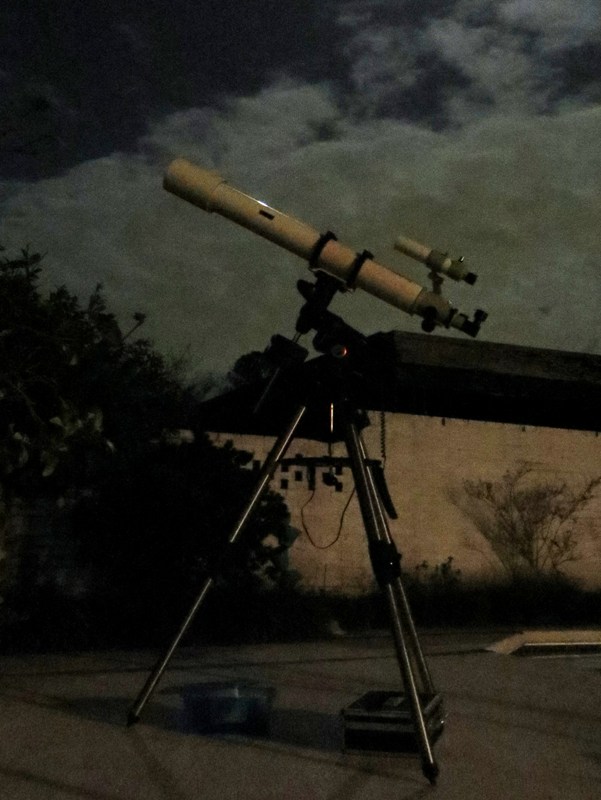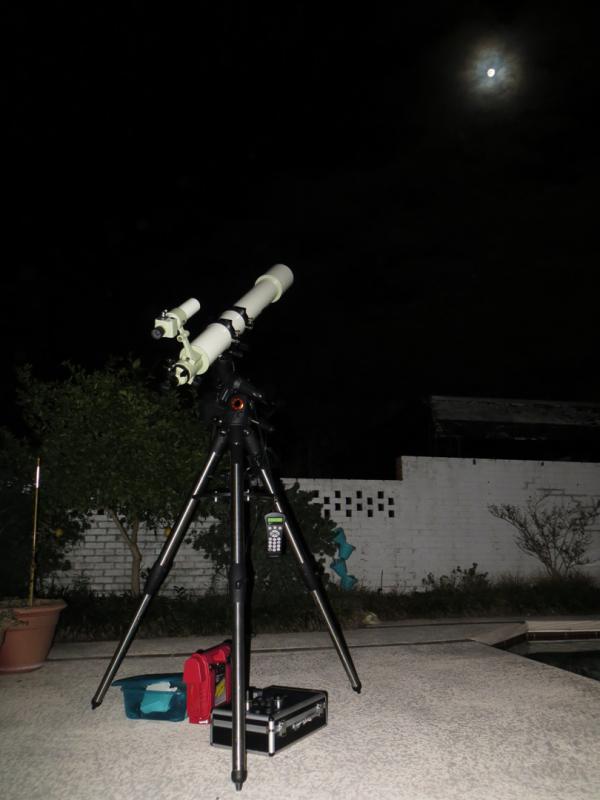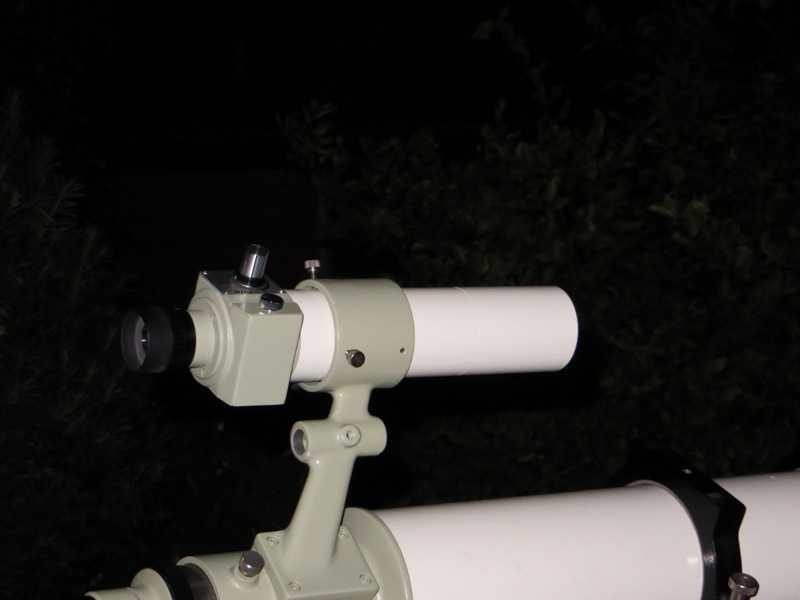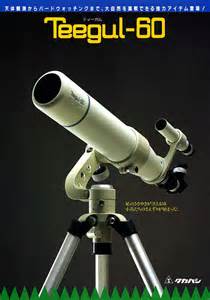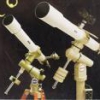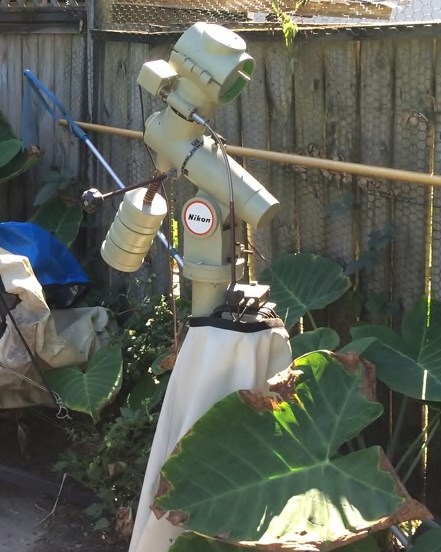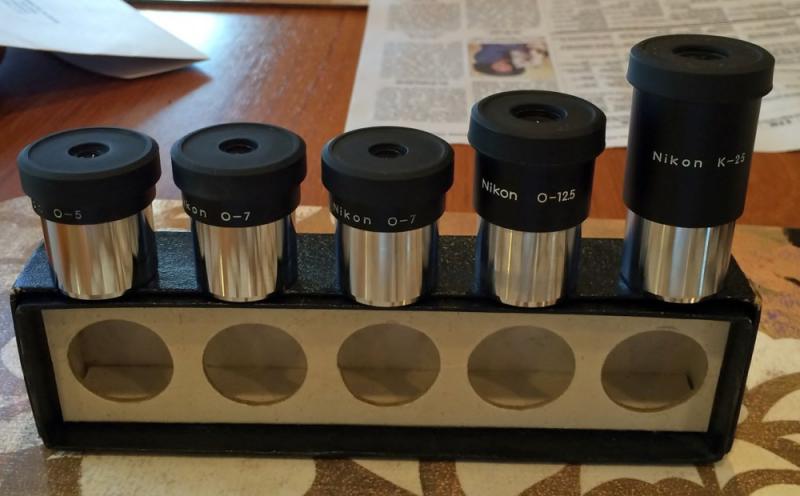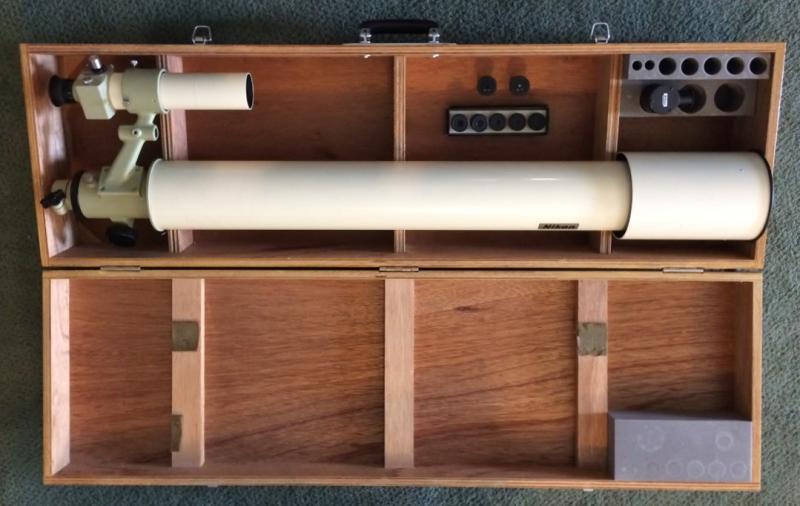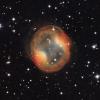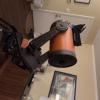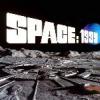Happy Thanksgiving everyone!
I recently acquired a Nikon 4" f/12 refractor, a very rare bird, but no turkey. It will soon find a new home in California and at the request of it's new owner and to satisfy my curiosity I tested it the night before Thanksgiving. It is truly a high end coveted piece of astronomical hardware. Available back in the 80's in limited numbers, I believe this one was originally purchased along with it's mount from RVR (Roger V. Re). Roger was the enthusiastic dealer who sold me all of my Unitron telescopes and he was a very extraordinary salesman.
The original purchaser of this Nikon started buying stuff from Roger shorly thereafter and his “RVR” collection included two 4" #152 Unitrons, a 5" equatorial Unitron, Goto 125 ED Apo, and the Nikon 100 mm f/12. Like all of his telescopes they were rarely used but were stored hard. The mount was kept outside under a barbeque pit cover and it indeed shows the effects of continued exposure to the elements. It will be a rebuild project for it’s new owner, maybe not too much work, but the counterweight shaft will need to be brushed down, stripped and re-chromed. Fortunately the telescope tube was kept inside and is in very good condition. I had the opportunity to test it for the benefit of it's new owner.
As mentioned it is a 100 mm f/12 apo. I have not seen any documentation on the glass type, but based on the spacing tabs, it appears to be an air-spaced doublet. (Someone correct me if I am wrong.) It has a white tube, actually off-white, almost a creamy white color. Tube diameter is 115 mm and the tube with dew shield in place to the end of the diagonal is 52.5 inches long. It is a relatively heavy tube compared to the Sky-Watcher Pro ED 100 or a Celestron/Vixen 102 mm f/9.8. The dew shield screws off and then is reversed and screwed back on for storage. One interesting feature is the 7x50 finder which is illuminated via a built in box that takes two AA batteries. The reticle illumination is a light green (which does not show up well on the Moon, but which otherwise works well). The reticle has 4 etched lines coming in toward the center and terminating in a circle that surrounds the center. The finder bracket has a peep hole half way between it’s base and the finder scope.
The focuser has etching on the drawtube and is, bar none, the smoothest single speed focuser I have ever used. The focuser knobs are large (2" diameter) black plastic; not too attractive in and of themselves but functional. The end of the focuser begs for a standard size adapter. There is a screw in interface which is 2" plus, but this reduces the end of the focuser to more than 1.25" but less than 2" (approximately 42 mm). There is a diagonal which is the 42 mm diameter on the telescope end that goes into the focuser and .965" at the eyepiece side. I had to use a .965"/1.25" adapter to use my eyepieces.
So how does this telescope perform? I had the opportunity to use this scope on the evening before Thanksgiving with my wife promising my services to show the grandkids of one of her friends some stuff thru the telescope. The night, weather-wise was good with a very light breeze, relatively low humidity and the temperature in the mid-60's. The Moon, however, was full, and as I live about 5 miles from downtown New Orleans, my backyard does not see dark country skies. The Moon at the full phase does not offer the interesting features that can be seen when the terminator is in play and the Sun angle makes for interesting changing shadows. Since I had 4 overly excitable young boys between the ages of 6 and 9 and two relatively well behaved young girls, both 11 years old, along with their grandmother and a few parents, I had to dispense some instructions, especially around such a high end telescope. (One boy wanted to dribble and throw a basketball, so I quickly changed that thought.) I also started with some "outreach" eyepieces - My set of Meade Series 5000 HD 60 eyepieces (4.5 mm up to 25 mm). I had the Nikon set up on my Celestron AVX mount which handled it very well. After an alignment our targets were the Moon, gamma Andromeda (Almach) and Uranus. The interest level covered the spectrum as expected.
After the kiddies left I was able to better evaluate this scope and it performs very, very well. For more critical testing I used a 5 eyepiece set of Baader "Genuine Ortho" Phantom coated eyepieces including the 18, 12.5, 9, 7 and 5 mm sizes. In comparison to both the Sky-Watcher ED 100 f/10 triplet and Sky-Watcher Pro ED 100 doublet recently tested in the "Wow and Wow" thread, it performed very, very well. I think it is even a bit better than the Sky-Watcher triplet in respect to absolute suppression of color. In the Sky-Watcher I had the faintest of the faint suspicion of a hint of color around the lunar limb; in this scope there was none. In addition the color renditon was absolutely neutral, reminding me of my previously owned TSA 102. The scope was well collimated with perfect bulls eyes seen on both sides of focus. This scope was the best I have seen in respect to out of focus pattern on both sides of focus - slightly better than the Sky-Watcher f/10 triplet and better than the larger and faster TAK FCT 150. I cannot fault this telescope and I will be anxious to see what it can do on both the Moon at a more favorable phase and with Jupiter on a good night. This scope handled all of the ortho eyepieces well and Uranus at 240x was a nice little disc.
This scope merits more testing, but with what I was able to see before the clouds moved in gives me no reason to fault it in any way.
See photos.
Barry Simon
Edited by BarrySimon615, 28 November 2015 - 07:57 PM.




